Where to dig in?
You’ll find the best gardening shears by choosing bypass pruners with titanium-coated blades, ergonomic grips, and smooth spring action. Look for models like Okatsune, Kent and Stowe Eversharp, or Felco that handle stems up to 3/4 inch thick without causing hand fatigue. These precision-ground steel tools feature cushioned handles, lightweight construction, and bolt-and-nut assembly for easy maintenance. Bypass shears work best for living plants, while anvil types suit dead wood. Proper selection depends on your specific gardening needs and cutting applications.
Types of Gardening Shears and Their Specific Functions
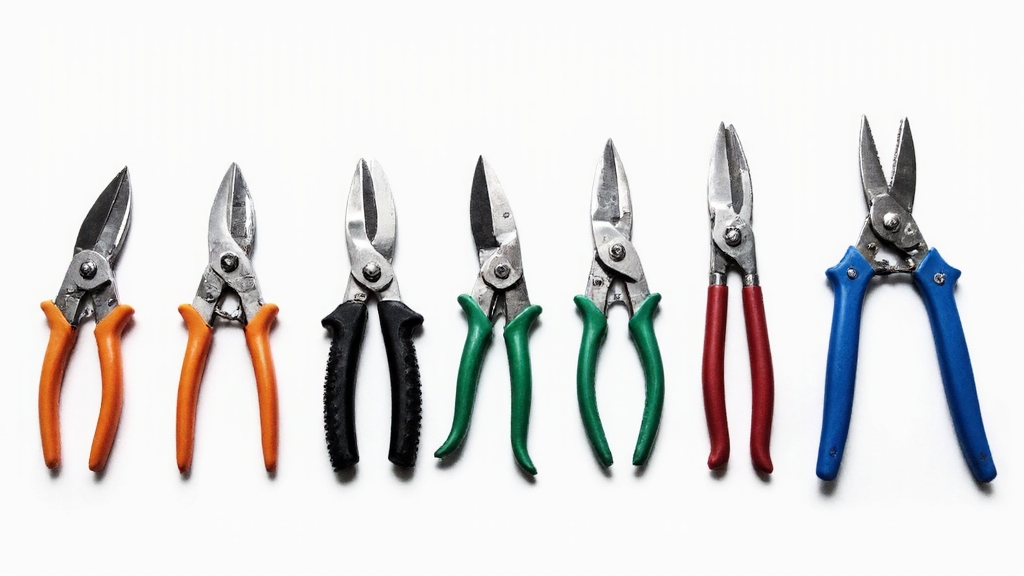
When choosing the right gardening shears for your projects, understanding the different types and their specific functions will help you make cuts that promote plant health and make your work more efficient.
Understanding your gardening shears and their specific functions ensures healthier plants and more efficient pruning work.
Bypass pruners feature two curved blades that slide past each other like scissors, making them perfect for clean cuts on living branches. You’ll want these for precision work since they won’t damage healthy plant tissue.
Anvil pruners use a single blade that closes against a flat surface, making them ideal for dead or dry wood. However, they’ll crush softer tissues, so avoid using them on live plants. Much like the variety amongst shears, the top gardening tools include diverse features, such as the Greenman stainless steel border fork known for its balance and pointed tines.
Ratchet pruners multiply your cutting force through stages, reducing hand strain when cutting thick stems. They’re excellent if you have grip strength limitations or tackle tough pruning jobs regularly. For reaching elevated areas, high branch shears provide extended reach without requiring ladders or climbing equipment.
Essential Features to Look for in Quality Pruning Shears
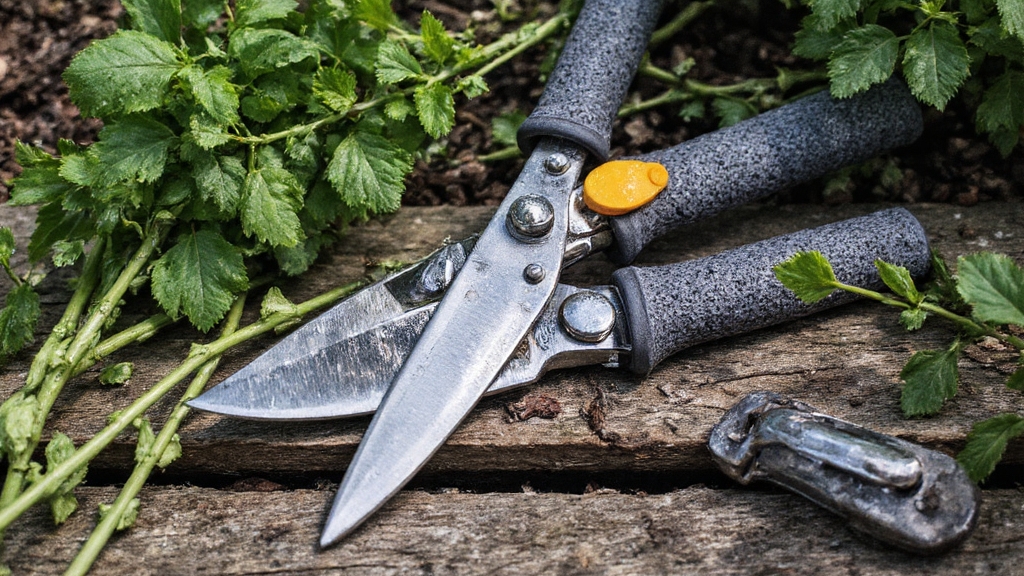
Now that you understand which type of shears works best for different cutting tasks, you’ll need to focus on the specific features that separate high-quality tools from mediocre ones.
Sharp, Bypass Blades
Look for precision-ground steel blades with titanium coatings. These materials stay sharper longer, reduce friction, and resist corrosion. Choose bypass designs where blades pass each other like scissors, not anvil types that crush stems. Touch screen compatibility is an innovative feature in some gardening gloves but isn’t necessary for shears.
Comfortable Handle Design
Select shears with ergonomic, cushioned grips covered in rubber. Lightweight construction reduces hand fatigue during long pruning sessions. Avoid models with sharp edges near springs that might pinch your fingers. Holding the tool towards the ends requires less force to use effectively.
Smooth Spring Action
Test the spring mechanism before buying. It should reopen blades automatically with minimal effort, allowing comfortable repetitive cutting.
Maintenance-Friendly Features
Choose bolt-and-nut construction over riveted designs for easy cleaning and blade replacement.
Top-Rated Brands and Models for 2025

Once you’ve identified the essential features that matter most, selecting from the top-performing brands becomes your next priority. Okatsune Pruners claimed the 2025 pruner shootout victory, delivering superior cutting performance with exceptional weight balance and sharpness. These Japanese-made tools excel at clean, precise cuts while reducing hand fatigue during extended use. Notably, brands like Milwaukee and Ryobi are recognized for their robust and innovative gardening tools, ensuring gardeners have access to durable and efficient equipment.
Kent and Stowe Eversharp Bypass Secateurs earned BBC Gardeners’ World Magazine’s Best Buy award for comfort and cutting efficiency. Their carbon steel blade features plasma coating, lightweight 330g design, and impressive 10-year warranty coverage. Regular blade sharpening ensures these premium tools maintain their cutting precision throughout years of garden maintenance.
Felco remains the Swiss standard for professional reliability, offering replaceable parts and hardened steel construction. Niwaki Pro combines traditional Japanese craftsmanship with modern engineering, while Gonicc provides affordable titanium-coated performance for budget-conscious gardeners seeking quality results.
Choosing the Right Shears for Different Gardening Applications
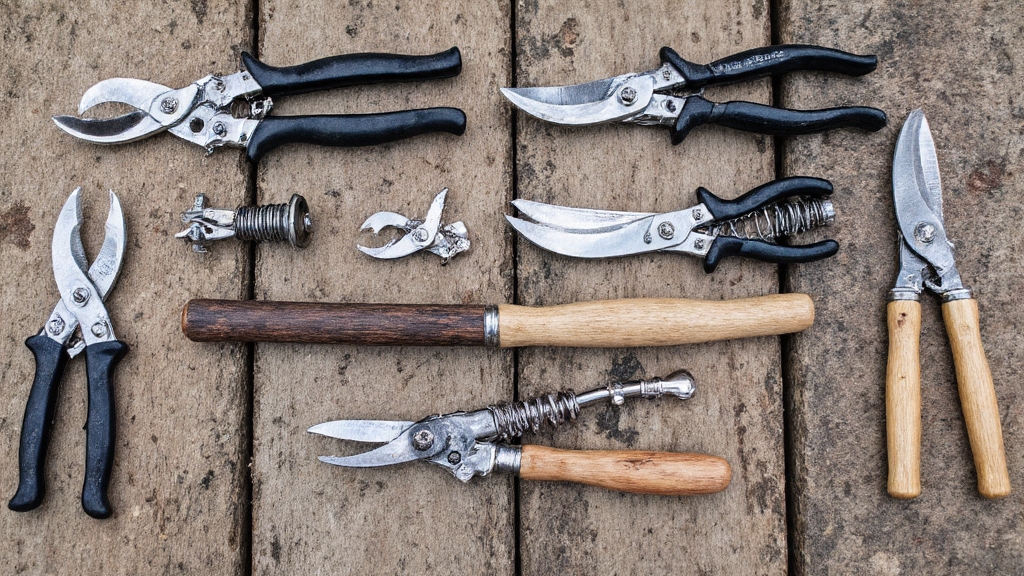
Before diving into specific brands and models, you’ll need to match your shear selection to your actual gardening tasks and plant types. Understanding which shears work best for your specific needs will save you time, money, and plant damage.
Start by identifying your primary gardening activities. Bypass shears excel at cutting living stems, making them perfect for vegetable harvesting, shrub shaping, and rose pruning. Anvil shears handle dead wood effectively, so they’re ideal for clearing dried branches and woody ornamental trimming. A Niwaki Weeding Hoe is appreciated for its versatility and sharp blade, offering gardeners a different weeding option alongside selecting the right shears.
| Shear Type | Best Applications |
|---|---|
| Bypass | Live stems, vegetables, soft pruning |
| Anvil | Dead wood, thick woody stems |
| Ratchet | Thick branches, repetitive cutting |
| Parrot-beak | Delicate herbs, precision work |
Consider the thickness you’ll typically cut, your hand strength, and how often you’ll use them. For most gardening tasks, bypass pruners provide a clean cut that prevents crushing damage to your plants.
Durability and Long-Term Maintenance Requirements
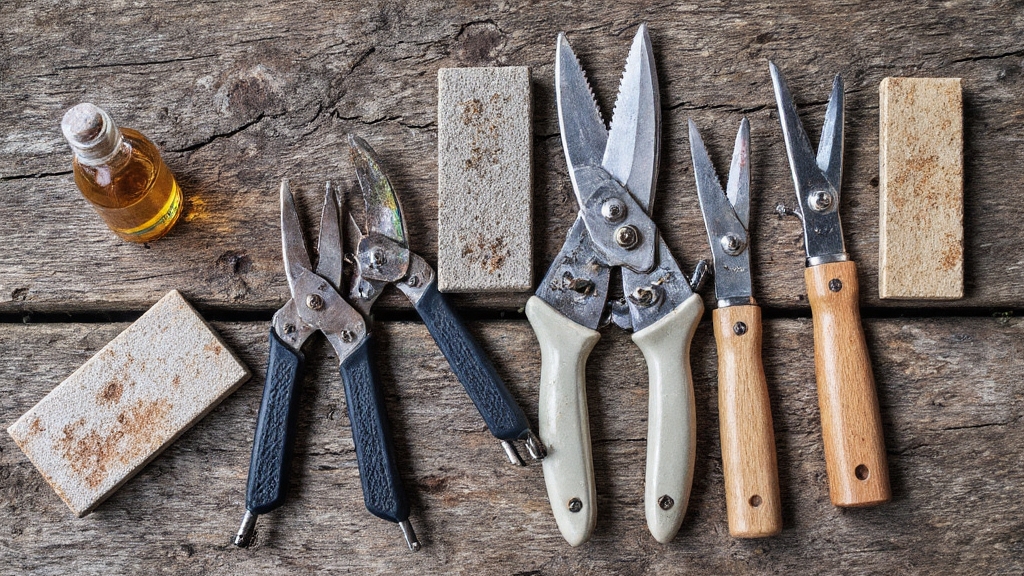
How long your gardening shears last depends entirely on how well you maintain them, and proper care can extend their lifespan from a few seasons to several decades.
Clean your shears after every use with a damp cloth, removing sap and debris that causes rust. Sharpen blades regularly using proper sharpening stones to maintain clean cuts and reduce plant damage. Lubricate all moving parts with light machine oil, but don’t over-oil since this attracts dirt. Newer models may benefit from the Kent and Stowe Capability Trowel’s hammer-end handle feature for additional usage areas beyond traditional shearing.
Store your tools in dry locations with protective blade covers. Inspect them regularly for rust, cracks, or loose screws, and tighten hardware as needed. Replace damaged springs or blades promptly, and consider professional servicing yearly for high-end models. Well-maintained shears improve efficiency and productivity in your garden work.
Performance Factors That Impact User Experience
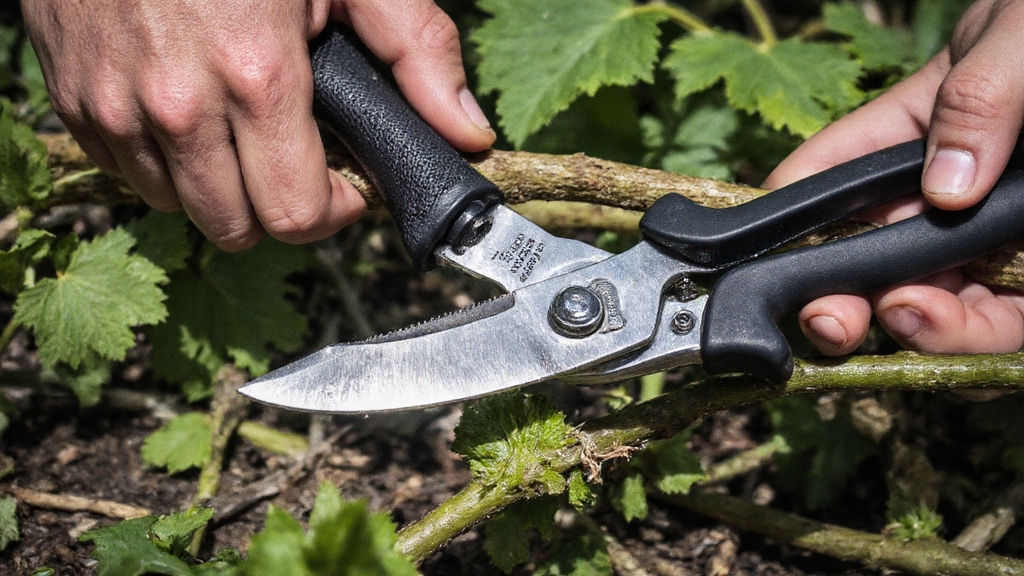
Five key performance factors determine whether your gardening shears will become trusty companions or frustrating tools that sit unused in your shed. Understanding these elements helps you choose shears that’ll enhance your gardening experience rather than hinder it.
Your shears’ performance depends on several interconnected factors that work together:
- Cutting mechanism efficiency – Bypass blades create clean cuts that promote plant healing, while anvil designs handle woody stems but may crush softer growth
- Ergonomic comfort features – Contoured handles, lightweight materials, and spring-action mechanisms reduce hand fatigue during extended use
- Power amplification systems – Advanced gear mechanisms can triple your cutting force, making tough branches manageable
- Weight distribution balance – Proper balance improves control and reduces wrist strain, especially during precision work
Integrating organic gardening practices, as discussed in Rodale’s Basic Organic Gardening, can further enhance the health of your plants when using the right shears.
These factors collectively determine how efficiently you’ll complete pruning tasks while maintaining comfort throughout your gardening sessions. Quality construction materials like carbon steel provide superior corrosion resistance and maintain sharpness longer than inferior alternatives.
Budget Considerations and Value Recommendations
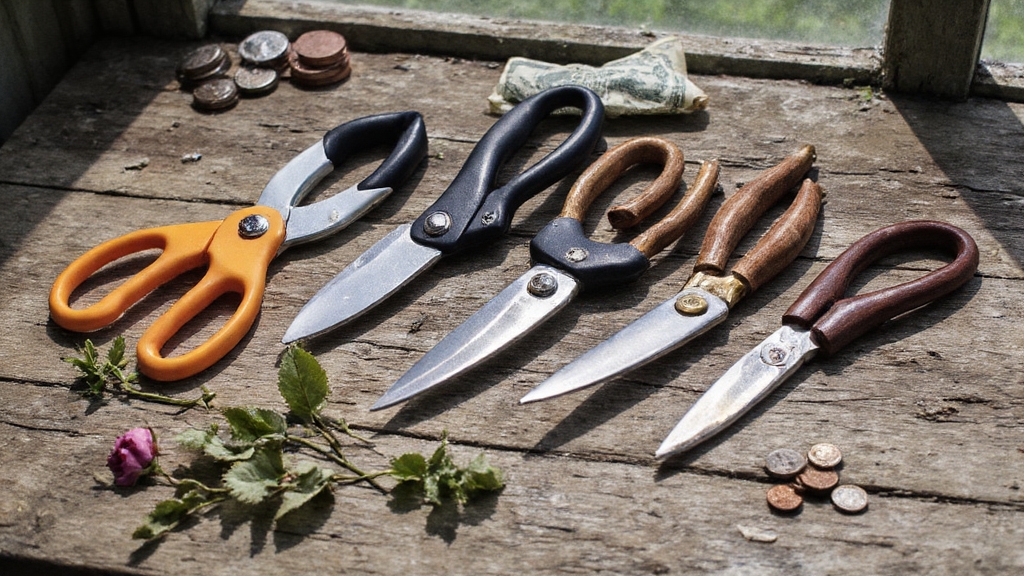
Smart spending on gardening shears doesn’t require breaking the bank, but it does demand understanding where your money delivers the most cutting power for your specific needs. With the right footwear, like waterproof gardening boots, task efficiency and comfort are enhanced, particularly in various seasonal conditions.
Budget Categories and Value Points
| Price Range | Features | Best For |
|---|---|---|
| Under £20/$20 | Basic blades, light construction | Occasional leaf trimming |
| £20-£40/$20-$50 | Compound action, better durability | Regular hedge maintenance |
| Over £40/$50 | Shock absorbers, premium materials | Heavy, frequent use |
| Combo sets under $30 | Multiple tools included | Versatile garden tasks |
| Warranty models | 10-year coverage | Long-term investment |
You’ll find the sweet spot in mid-range models offering compound action mechanisms. These reduce hand strain while tackling tougher branches. Look for anti-slip rubber handles and high carbon steel blades, which provide excellent value without premium pricing. Consider models with titanium coated blade technology for enhanced durability and smoother cuts through various plant materials.
Professional Tips for Maximizing Shear Effectiveness
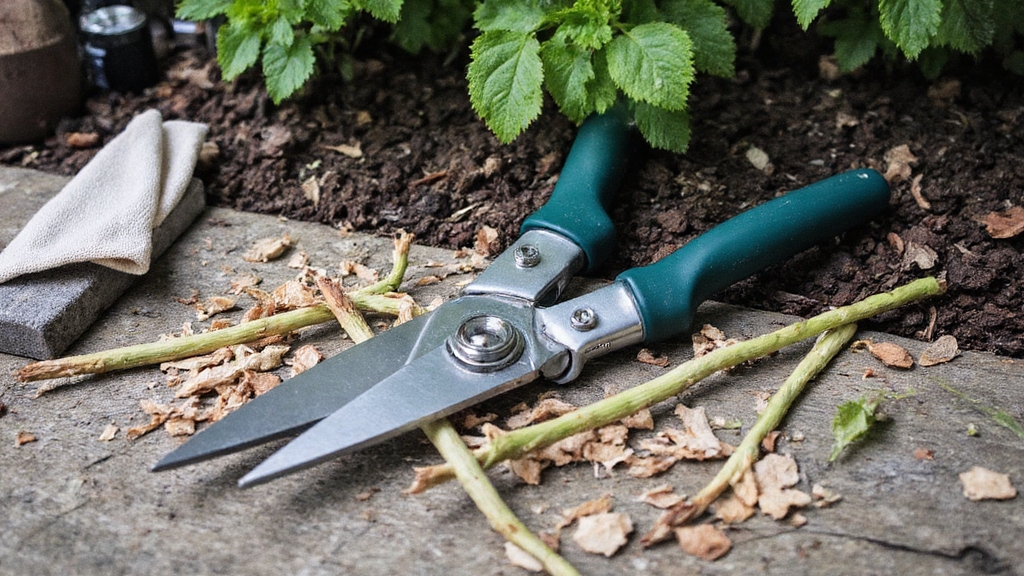
While owning quality shears provides the foundation for garden success, mastering proper maintenance and technique transforms even basic tools into precision cutting implements. Professional gardeners understand that shear efficacy depends on consistent care, proper usage, and strategic maintenance routines that extend tool life while improving cutting performance.
Essential Professional Techniques
- Clean after every use – Remove sap, dirt, and plant residue with warm soapy water, then sanitize with rubbing alcohol to prevent disease transmission between plants.
- Sharpen regularly using proper tools – Invest in whetstones or carbide sharpeners, maintaining correct blade angles for clean cuts that minimize plant trauma. Dull blades damage plant stems, making them susceptible to pests and diseases.
- Lubricate pivot points systematically – Apply penetrating oils like 3-in-One to reduce friction, prevent rust, and ensure smooth operation throughout gardening seasons. For more persistent issues, consider using selective herbicides to target stubborn weeds that might compete for resources, ensuring optimal plant growth.
- Match shears to cutting tasks – Use appropriate shear types for specific branch sizes, avoiding forced cuts that damage blades and compromise cutting efficiency.
Frequently Asked Questions
Can Gardening Shears Be Sharpened at Home or Do They Require Professional Service?
You can definitely sharpen gardening shears at home using basic tools like whetstones, files, and steel wool. Simply disassemble the blades, clean off rust and debris, then sharpen while matching the original bevel angle. Home sharpening restores functionality within minutes and costs less than professional service.
However, you’ll need professional help for severely damaged blades, deep nicks, or complex mechanism repairs.
What Safety Precautions Should I Take When Using Different Types of Pruning Shears?
You’ll need proper PPE including gloves, eye protection, and long sleeves before starting. Inspect your shears for sharpness, damage, and proper function.
Keep hands away from cutting paths, carry tools with blades down, and maintain safe distances from others. Don’t exceed your shears’ capacity or work near power lines.
Use ladders safely, secure tools when climbing, and take breaks to prevent fatigue-related accidents.
How Do I Properly Clean and Disinfect My Shears Between Different Plants?
First, scrub your shears with a stiff brush to remove all visible dirt, sap, and plant residue. Rinse with clean water afterward.
Next, soak or spray the blades with a 10% bleach solution for three to ten minutes, or wipe them with rubbing alcohol. Always disinfect between different plants, especially if you notice disease symptoms.
Finally, rinse and dry your tools completely to prevent corrosion.
Are Left-Handed Gardening Shears Available and Do They Perform as Well?
Yes, left-handed gardening shears are widely available and perform excellently. Major brands like Felco offer dedicated left-handed models with ergonomic handles, angled cutting heads, and shock absorbers.
You’ll find them at retailers including Walmart and specialty shops. These shears feature lightweight designs, replaceable blades, and often carry lifetime warranties. Users report superior comfort, cutting precision, and durability comparable to right-handed versions.
What’s the Proper Cutting Technique to Avoid Damaging Plants With My Shears?
Position your bypass pruners just above a bud or branch junction, ensuring the cutting blade faces the plant’s main body. Make smooth, deliberate cuts at angles less than 45 degrees without twisting or forcing branches.
Hold plants gently but firmly while cutting, and let the blade slice completely through stems rather than crushing tissue. Keep your shears sharp and clean for precise cuts that heal quickly.
Conclusion
You’ve now got the knowledge to select gardening shears that’ll serve you well for years. Remember to match your tool’s features to your specific gardening tasks, invest in quality blades that you can maintain properly, and don’t forget to clean and sharpen them regularly. With the right shears in hand, you’ll make cleaner cuts, healthier plants, and enjoy more efficient gardening sessions every time.

